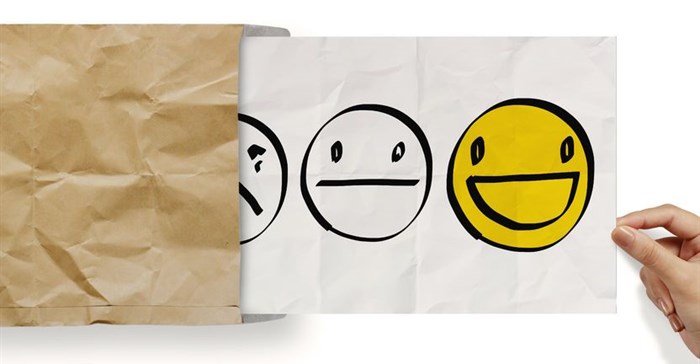
Subscribe & Follow
South African Customer Satisfaction Index shows fondness for fast foods

Using a sample of 36,519 South African customers, the SAcsi measured fast food, life insurance, cellular handsets, full-service restaurants, banking, supermarkets, short-term insurance, wireless internet providers and municipalities throughout the year. The National SAcsi offers impartial insights across a variety of South African industries by blending a Customer Expectations Index, Perceived Quality Index and a Perceived Value Index to achieve an overall result out of 100.
According to the Index, the fast food industry achieved an overall satisfaction score of 82.2, which was marginally up from 82 in 2015 and 80.5 in the previous year.
Customers scored the life insurance industry an overall 79 in 2016, up significantly from 77.3 in 2015, and cellular handsets went from 77.2 to 78.2 in the same period.
Full-service restaurants performed solidly with a SAcsi score of 77.6, banking was stable with a score of 76.5, while supermarkets have seen a steady decline from 81.4 in 2014 to 76.6 (2015) to 76.2 in 2016, and short-term insurance dipped to 75.8 from 77.9 in 2015.
Poor customer satisfaction
Within the context of the South African market, a score under 70 generally indicates poor customer satisfaction. The wireless internet providers industry, scoring 67.8 points (a decline from 68.2 in 2015) is one of these. Municipalities suffered a low score of 59.5, down from 61.8 in 2015 due to the overall deterioration of satisfaction with service delivery in the eight major municipal districts measured (Cape Town, eThekwini, Tshwane, Johannesburg, Ekurhuleni, Nelson Mandela Bay, Mangaung and Buffalo City).
“While South African customers’ disposable income has been under pressure, which has directly impacted many industries, the fast food sector remains resilient,” says Consulta CEO, Professor Adré Schreuder. “During tough economic times, people will spend less on semi-durable goods such as clothing and furniture, and more on the quick-high, feel-good experience of fast food. The convenience it offers is also attractive to people who might be spending longer hours working to supplement their income in tough times.”
Although the overall National SAcsi expectations and perceived quality have increased marginally since 2015, perceived value has dropped from a score of 79.3 to 72.1 in 2016, an indication that people see goods and services as becoming more expensive compared to the value they receive. Despite this, satisfaction has remained consistent at 75.7 compared to 75.4 and customer loyalty has increased to 69.9 from 65.2.
Individual brand results
When looking at individual brands, Debonairs and Nando’s were the top scoring brands for the year, with SAcsi scores of 85 and 83.8 respectively. Electronics brand Apple was the third best performer with 83.5 points, followed by McDonald’s scoring 83.2 and Capitec Bank with a score of 83.1.
On the other end of the spectrum, wireless internet providers MTN, Cell C, Telkom Mobile and Vodacom were the four bottom brands of the year, each scoring under 70, with MTN’s score of 65.9 being the lowest.
Of the eight major municipalities surveyed, Buffalo City had the lowest score of 47.6, far below the average sector score of 57.3, while Cape Town beat the average comfortably with a score of 70.3.
The biggest movers for the year were Liberty and Debonairs, each seeing their SAcsi scores jump 3.9 points to 78.1 and 85, and McDonald’s which rose by 3.1 points to 83.2. Sanlam, Spur, Old Mutual, Nokia, FNB and Metropolitan achieved other notable increases.
While the fast food industry’s customer expectation index score was a high 80.3, this was exceeded by a perceived value score of 82.2 and even further by a perceived overall quality score of 85.3, meaning that fast food brands are generally seen to deliver well on their promises.
The expectation score for wireless internet providers was a relatively low 74.2. However, the industry still failed to achieve or exceed this, recording a perceived overall quality score of 72.5 and an even lower perceived value score of 68.6.
“In general, a product is assumed to meet its customers’ basic needs, but the difference, negative or positive, is made by the company’s transparency, communication and customer service. Brands with low SAcsi scores need to be worried, as continuous poor performance in the past has almost always been followed by the exit of a brand from the market, as was seen with Saambou, Altech Autopage Cellular and now Blackberry,” Schreuder says.
SA customer satisfaction versus international
The National SAcsi was also measured against similar satisfaction indices in the US, Singapore, South Korea and other countries.
South Africa achieved an overall customer expectation index score of 79.2, compared to 80.2 for the US and 82.9 for South Korea. Singapore brands had a low customer expectation score of 72.5.
The gap between expectations and quality was narrow for most countries at between 0.7 and 3%, meaning that the perceived quality was always slightly higher than expected. The only exception was in South Korea where the perceived quality of brands’ products and services failed to meet expectations, with perceived quality a huge 10.1 points behind customer expectations.
“While South Africans have the highest rate of complaints made among the countries surveyed, we are still the third most satisfied nation,” says Prof Schreuder. “South Koreans are a more reserved society and they don’t complain as much as others, but they are the least price-tolerant and the least loyal of all nations. Americans, being less price-sensitive, are generally the most loyal and satisfied consumers.”
Continued political instability, high unemployment rates and poor business confidence in recent years will mean that the National SAcsi is set to remain at its current low levels. Still, brands that draw from the insights in the index and adapt accordingly are generally more likely to improve on previous scores.













